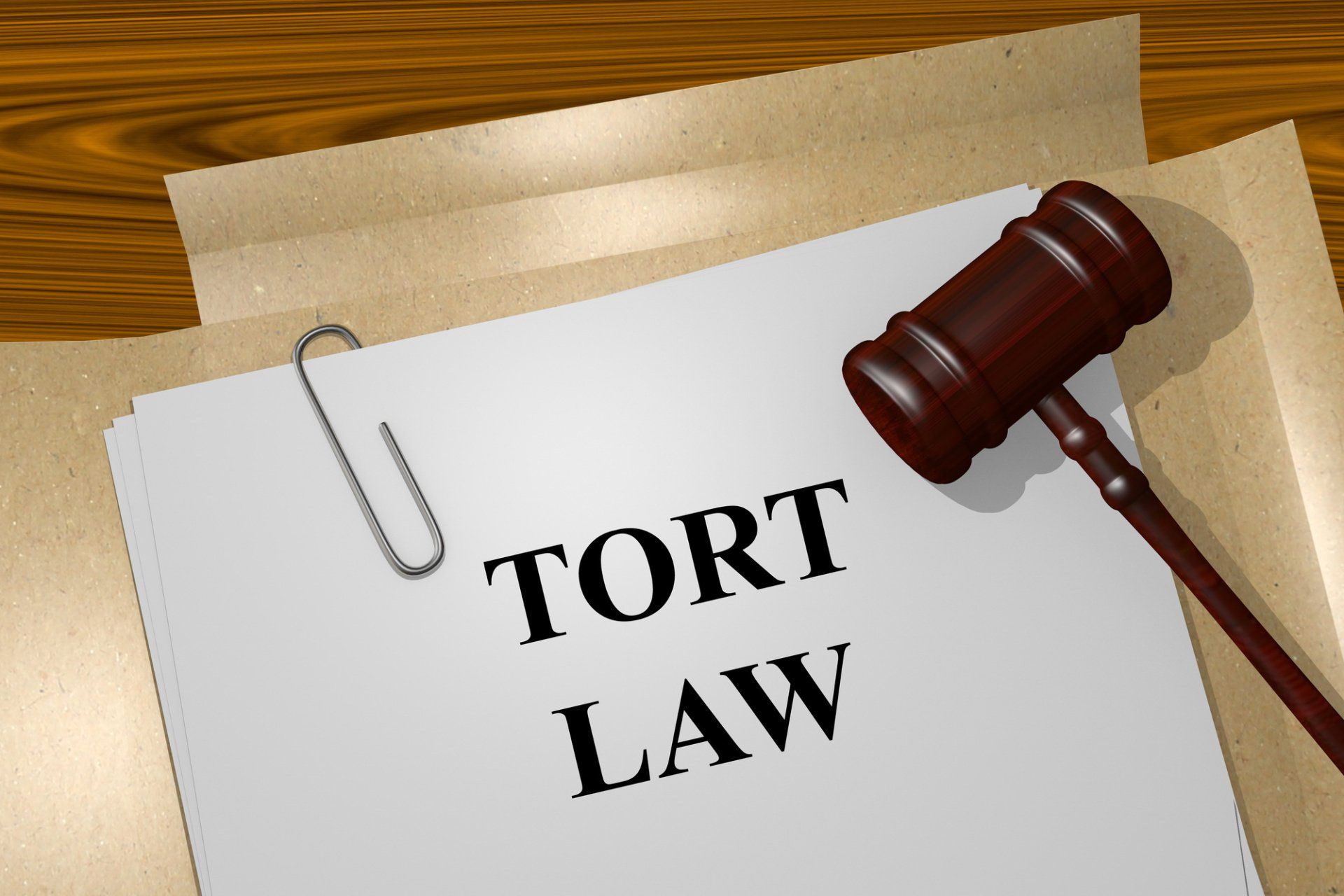Practice Areas
TORT CLAIMS
Establishing a Tort Claim: What are the Key Elements?
In 2010, Tort reform laws were passed to lessen the number of tort claims made per year and restrict lawyers from suing for mass amounts of money.
While reform laws may protect some individuals, tort laws are set in place to help victims of negligence find relief from their injuries or damages.
To see if your claim qualifies, educate yourself on the elements of tort laws.
If you have suffered any loss or injury due to someone's failure to perform their legal duty, you might have the elements to establish a tort claim.
What Is a Tort Claim?
In its simplicity, a tort occurs when one person inflicts damage or injury on another person. The injured party can then sue for monetary compensation for those injuries or damages. A tort law authorizes a code of conduct for societal civil rights.
Tort laws serve to:
- Keep people from committing acts that harm other individuals
- To hold others accountable for causing harm
- To help the injured parties
There are three types of torts:
- Intentional Torts
- Negligent Torts
- Strict Liability
If your tort case seeks monetary compensation, it must settle before trial. Otherwise, it will go to a jury.
4 Key Elements of a Tort Law
All civil lawsuits are tort laws. To successfully carry out these tort laws, you must prove these four elements have been breached.
1. Duty of Care
Duty of Care requires all citizens to be mindful of their actions when in a public setting. When you are around other people, they expect you to conduct yourself with unselfish mindfulness that protects those around you.
2. Breaching Duty of Care
If a person fails to meet the Duty of Care standards, their actions may cause other people harm Thus, causing a breach in Duty of Care.
Example of Duty of Car: Someone driving a car who is not mindful of their passengers or other people on the road. If that person causes an accident, and that accident causes harm to a person or vehicle, then they have failed to uphold the duty of care standards.
That person is then liable to sue for negligence.
3. Causation of Injury
There needs to be present the action which caused a person's injuries. The accused must be proven to have committed an act of negligence that led to the victim's suffering.
A court will assess whether the injuries were regardless of the apparent causation of injury.
4. Damage or Injury
Along with the causation of injury, there needs to be proof of damages from negligence. Without evidence, there is little for which the accused is accountable.
These injuries must prove to exist. Meaning, you cannot claim an injury without the appropriate medical documents or proof backing your statement.
Hire a Lawyer
After reading through these tort claim elements, you may realize that you have been subjected to either a breach of duty of care or some form of a negligent or wrongful act.
The Law Office of Mark Nicholson is here to ensure that you find the relief you deserve with your personal injury case.
We provide expert tort claim lawyers to represent you in the best way possible. If you are looking for a tort claim lawyer, we invite you to get in touch with us so we can begin reviewing your case and answer any existing tort claim questions. Call us at 317-667-0718.
Happy Clients
A client review said, "My supervisor sexually assaulted me at an after-work party. This law firm helped me take him and the company to court, and we won. Mark and his team are great personal injury attorneys." See more reviews by clicking here.













